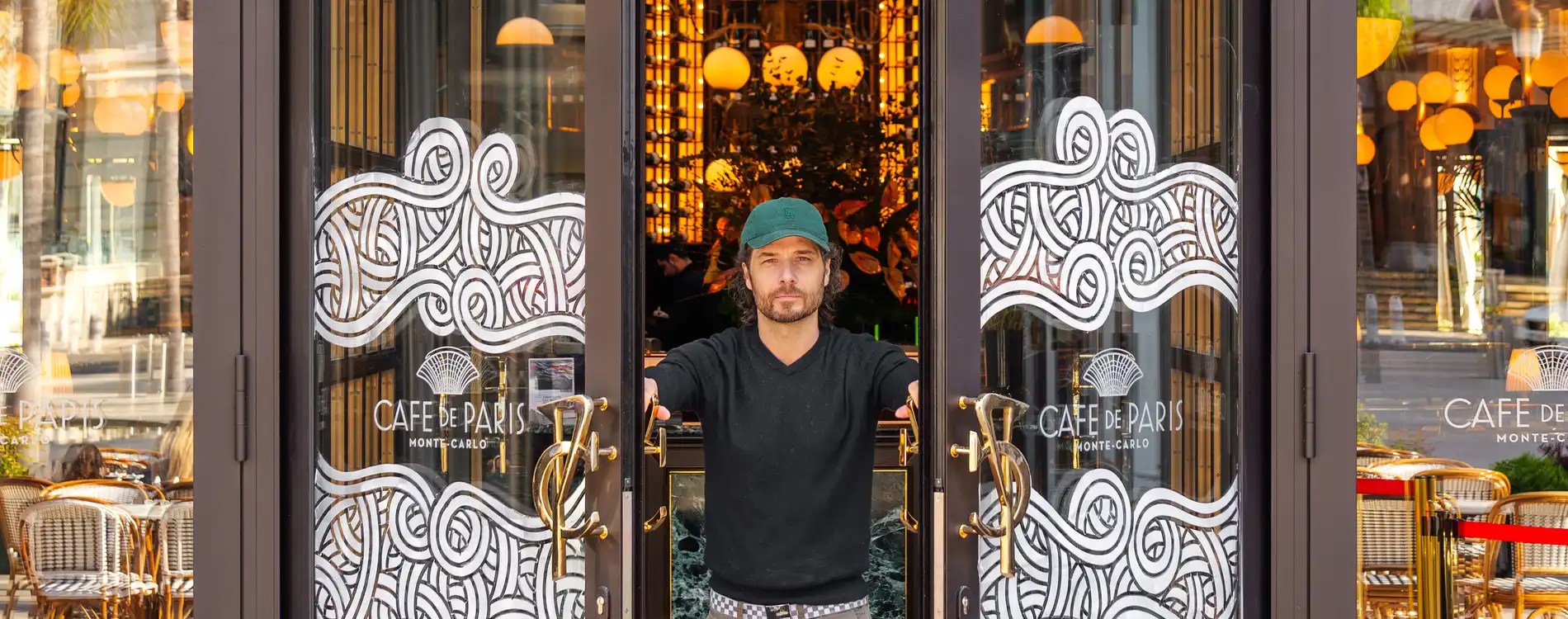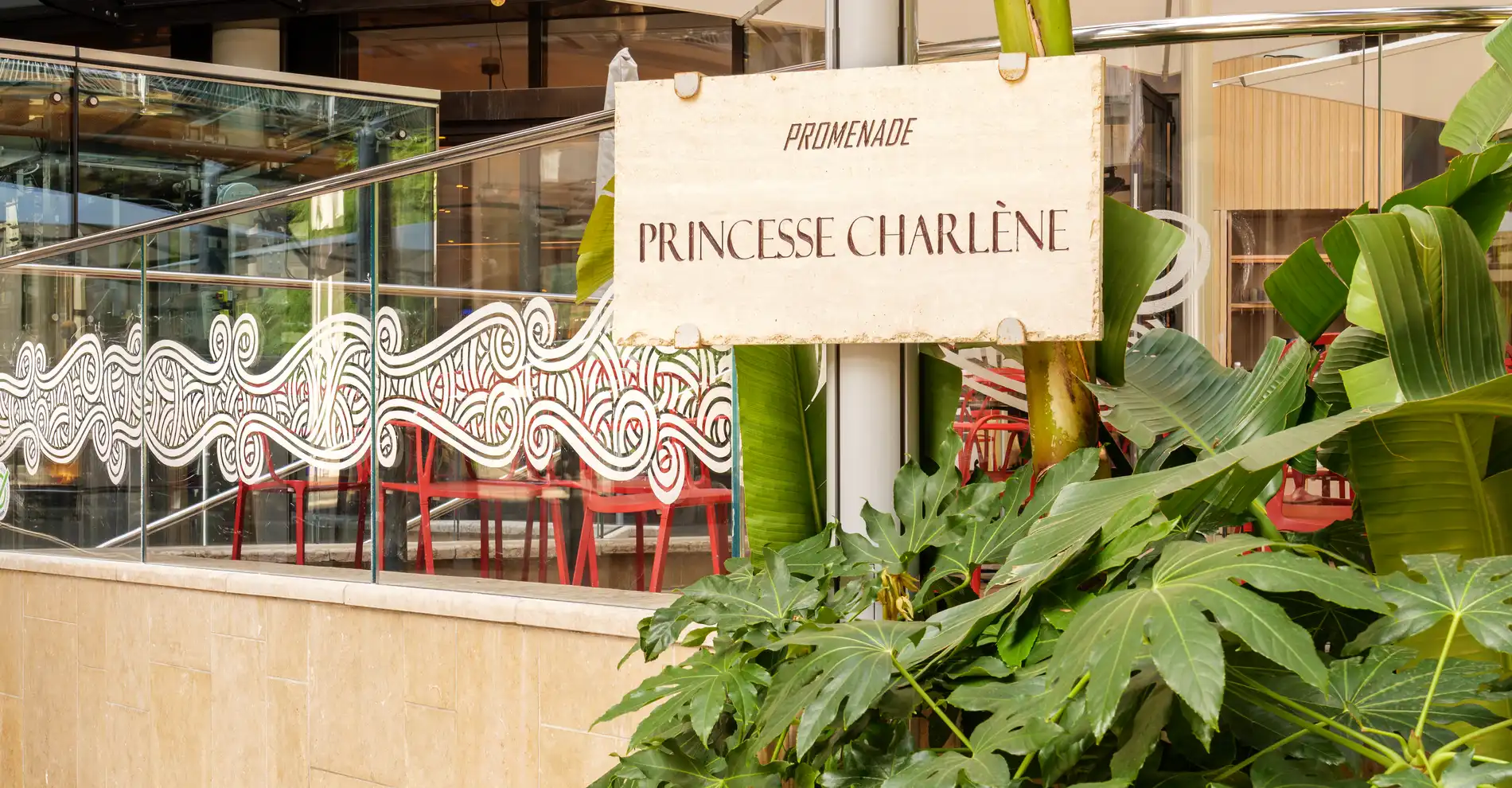Published on March 29, 2024Updated on September 10, 2024
Enhancing the cracks in a wall, decorating a hole in the road, embellishing alleyways and side roads, repairing and beautifying the city... This is the art of Jordane Saget, a Parisian street artist who has been making his mark on the street with his lines for the last decade. A trio of parallel curves woven with chalk, a brush or a finger, which he brought to Monaco this year. Three lines of poetry echoing the three colours of spring in Monaco, blue, pink and red.
Contents
- Do you remember your first lines?
- What feelings went through your mind that day?
- Curves rather than straight lines...
- Why chalk?
- What do you mean by that?
- There's something almost primitive about your work...
- What are your sources of inspiration?
- Is surveying Paris or any other space part of your artistic approach?
- How do you see your relationship with Monaco as a space?
- What kind of dialogue do you imagine developing with this space, with the locals and with travellers passing through?
- Why did you agree to work with us?
- Yann-Arthus Bertrand, Agnès b., Jean-Charles de Castelbajac and now Monaco - a fine array of collaborations?
- Which places have particularly inspired you?
Do you remember your first lines?
Jordane Saget: I created my lines in around 2010, but it was in 2015 that I drew my first lines on the streets of Paris, on the steps of Saint-Vincent-de-Paul church, Place Franz-Liszt in the 10th arrondissement. I remember children playing in front of it and I felt more comfortable taking to the streets with my drawings. It was tricky in the beginning!
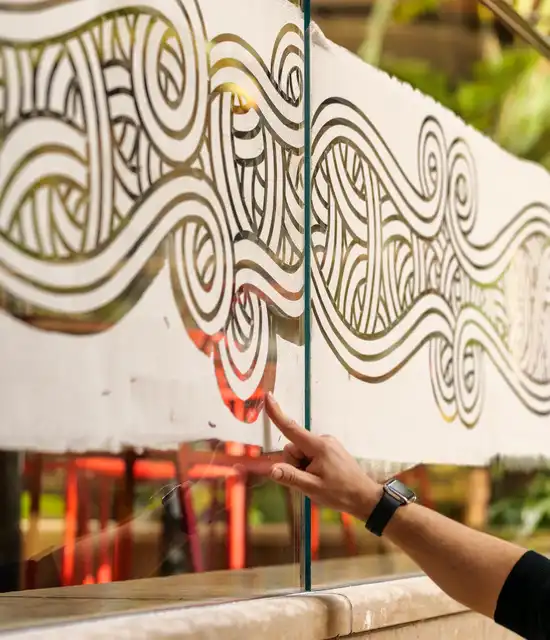
What were you feeling that day?
Jordane Saget: The lines first appeared on paper. They came from my background, from my weaknesses. I found myself drawing lines to try and recover from a difficult stage in my life. But the artistic act itself was born on the streets. It happens just as we start to kind of “disrupt” the world around us. The life trajectories of passers-by are changed in one way or another. Stopping in the street, even for a few seconds, is unexpected. It is this intervention in people’s daily lives that interests me. No matter how fleeting the exchange. Drawing in the street is clearly not the same as drawing in my studio. In the street, you question the way people look at you, you question the very idea of what a city and a public space are. In the workshop, the approach is much more self-centred. In 2015, I realised how much good it did me to take to the streets.
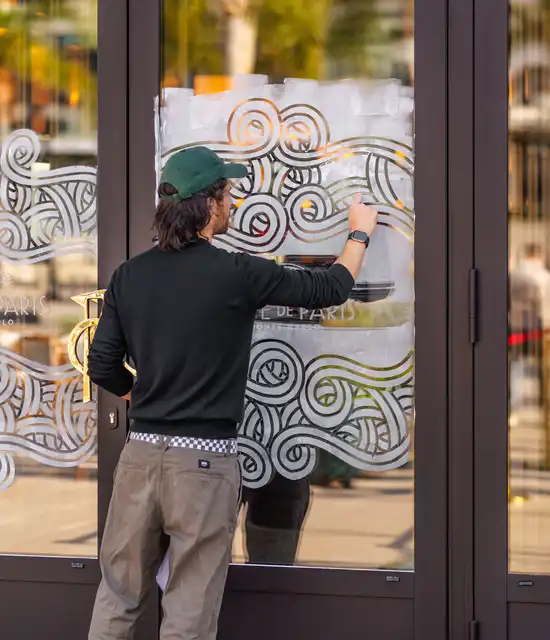
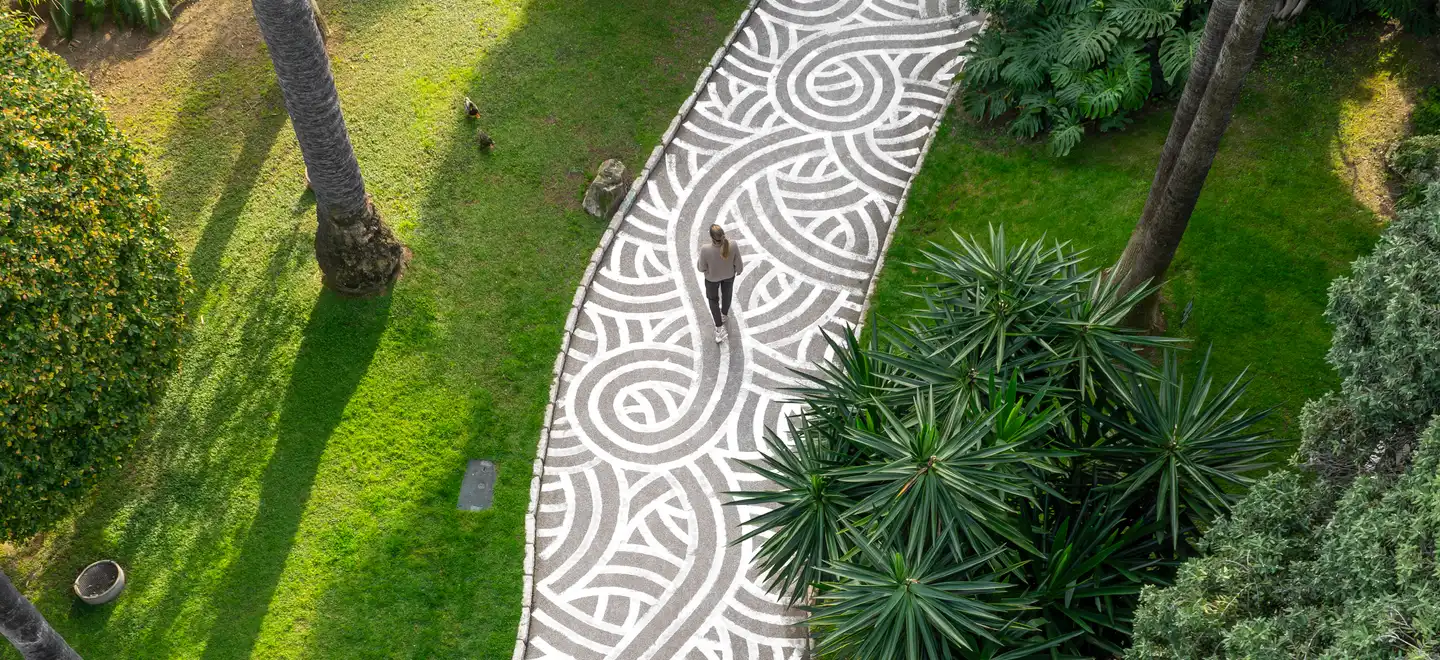
Curves rather than straight lines...
Jordane Saget: Yes! And yet, in my youth, when I was already looking for a magic formula to “make things beautiful”, I tended towards straight lines. I loved maths and geometry. Then my grandfather introduced me to Vasarely’s advertising drawings. That’s where I started looking. But it was above all my practice of Tai Chi Chuan that really brought curves into my life. I had an extraordinary teacher. As I worked on my movements with him, the movements of my curves were born. There is clearly something of Chinese philosophy in how I define my actions – in this case, my lines – in a given situation. My lines are born of the framework in which I choose to place them. Here I’ve found my magic formula to “make things beautiful”, a formula that’s much more flexible and alive than a straight trajectory. Admittedly, there are certain rules I stick to – three lines more or less parallel, always more or less evenly spaced – but these rules allow me a great deal of freedom.
Why chalk?
Jordane Saget: Initially, I drew my lines on paper at home... Then came the need for a change of scenery, of environment, of life. So I went out, but without really knowing what I was going to do there. For me, the outside meant going from point A to point B, the straight line, the Metro... I hadn’t yet learnt to ‘look’. So what could I do? What if I did the same thing as I did at home? But I’m rather reserved and I don’t like disturbing people too much by ‘shaking up’ their daily lives with my drawings. That’s where chalk came into its own. As I wasn’t sure of myself, I knew that if I drew on the ground with chalk, it would be easy to erase. But very quickly I realised that I had found the ideal tool: chalk, synonymous with poetry and childhood... That’s how I learned to look at the outside world differently, to move away from the straight lines of the Metro and see things ‘as curves’. The lines and my life overlapped more and more. Just like my ‘figure’ in the loop.
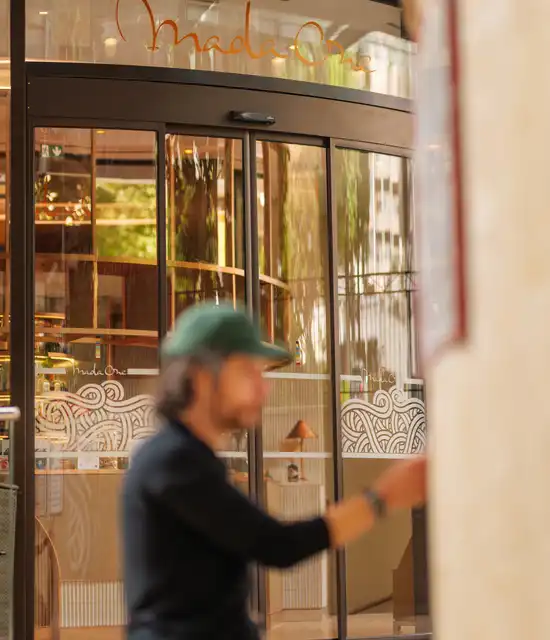
What do you mean by that?
Jordane Saget: Well, in the beginning, the loop didn’t exist. It happened when I began to wonder about the origin of the line, at the same time as I was wondering about the origin of my life and, as a corollary, my relationship with death. So in this quest for the origin of the line, there was a desire on my part to learn to look at life differently. And that’s how the loop came about. But beyond that, this set of lines has, for me, become a prism, a window through which I can look to consider a specific problem or my life in general.
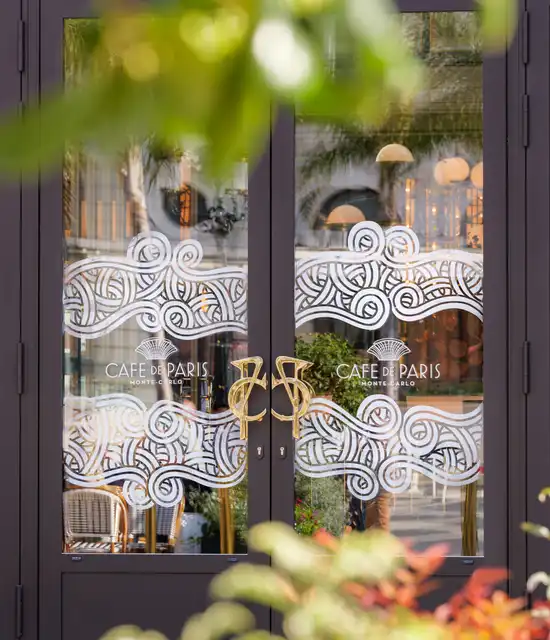
There’s something almost primitive about your work...
Jordane Saget: People have spoken to me about Celtic and Aboriginal art, but it’s not an artistic endeavour on my part. I think it comes more from my self-taught side, in how I tend towards simplicity, whether with chalk or my finger. It’s a technique that came to me after finding one of my frescoes ‘toyed’ (tagged over - Ed.) by some graffiti artists. They didn’t have their stuff on them, so they ‘stretched’ the chalk with their fingers to add their tag. It hurt at the time, because I’d always forbidden myself from going over someone else’s work. But in the end, it was thanks to them that I started drawing with my finger, not just on walls and floors, but also on advertising windows, surfaces that are just as “urban” and increasingly present!
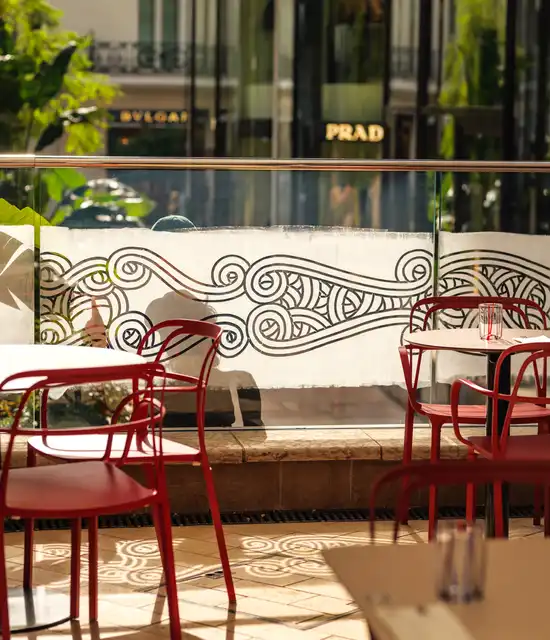
Where do you get your inspiration from?
Jordane Saget: I don’t really have any. Apart from maybe Vasarely and Kandinsky, but otherwise my artistic references stop at my Art History option when I took my A-levels. And that’s really lucky, because I think that if I’d taken an Art History course, I wouldn’t have gone for it. I wouldn’t have dared. I would have said to myself “that’s already been done”, I would have compared myself. By starting from scratch, I was able to move forward without fear, in complete freedom.
Is surveying Paris or any other space part of your artistic approach?
Jordane Saget: Yes, it all starts with getting a ‘feel’ for the city. For years, all I had to do was carry my bag on my back and my spots would reveal themselves. It could be at any time: on my way to an appointment, for example, and all of a sudden, a pavement here, a hole in the road there... I knew then that I had to lay my lines down straight away. I would cancel my appointment or arrive late, but I would have to do it. Today, my schedule has become a little busier, but I’m still in the habit of always having my equipment with me so that I can just whip it out. Many artistic opportunities have fallen into my lap.
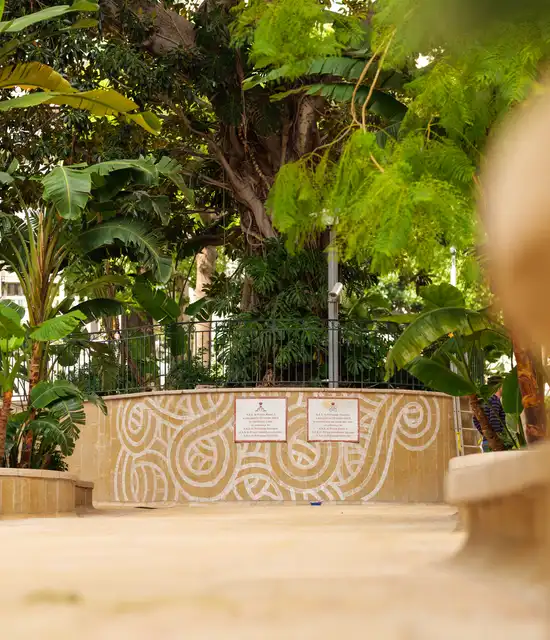
How do you see your relationship with Monaco as a space?
Jordane Saget: I really fell in love with it. There was an immediate sense of ‘never seen, never felt’. It was a very different feeling to anything I’d ever experienced before. It’s a city without holes (laughs), with everything high up. The spaces are clearly different. And the fact that I was invited allowed me to give free rein to all the possibilities. Otherwise, I wouldn’t necessarily have dared. There’s the sky, the sea, blue everywhere, a blue that I can’t find in Paris. This horizon opens up incredible possibilities. It inevitably comes up against mine in one way or another.
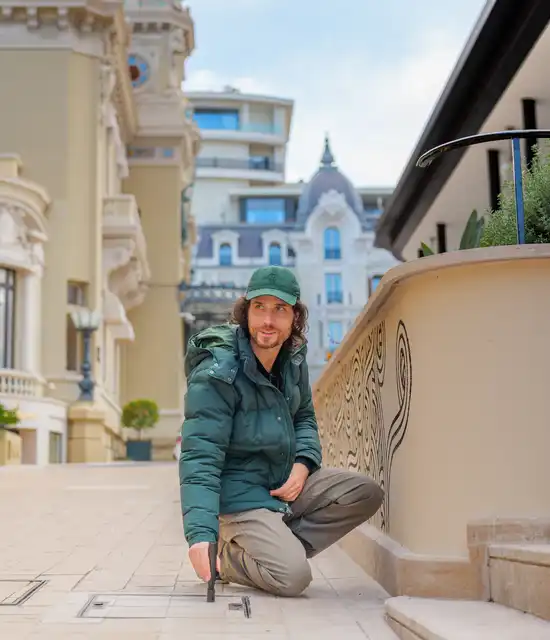
What kind of dialogue do you imagine developing with this space, with the locals and with travellers passing through?
Jordane Saget: In Paris, part of my work consists of taking over neglected spaces, in the shadows... In Monaco, and more specifically in the Monte-Carlo district, the atmosphere is very different. So the idea is to make my lines resonate with this beauty and magnify it. It’s a question of respecting these magnificent places, without wanting to turn everything upside down. Go slowly, put down a few lines, let people discover them, receive them, win them over... In this way, I can create an artistic narrative between them and myself. In Paris, I’ve done a lot of unauthorised work, for example on the Saint-Louis bridge. It’s a way of showing that it’s also possible to beautify the city without necessarily asking for permission. Sometimes you just can’t wait! But in Monaco, the dynamic is different, that’s for sure. I have a whole new story to tell there. A new curiosity to arouse.
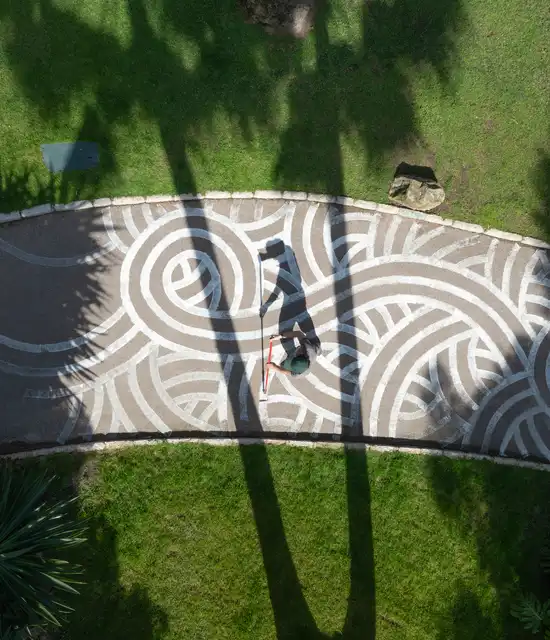
Why did you agree to work with us?
Jordane Saget: The fact that Monaco and Monte-Carlo Société des Bains de Mer came looking for me means a lot. It’s something that hasn’t happened to me that much in Paris, even though I think I’ve established a real identity there through my lines. This collaboration is perhaps the start of something even bigger. In any case, I can see myself getting more involved, beyond just the spring in Monaco. I very much appreciate the trust that has been placed in me. There can’t be that many street artists who have drawn in Monaco. I see working in this city as a great opportunity and a great gift.
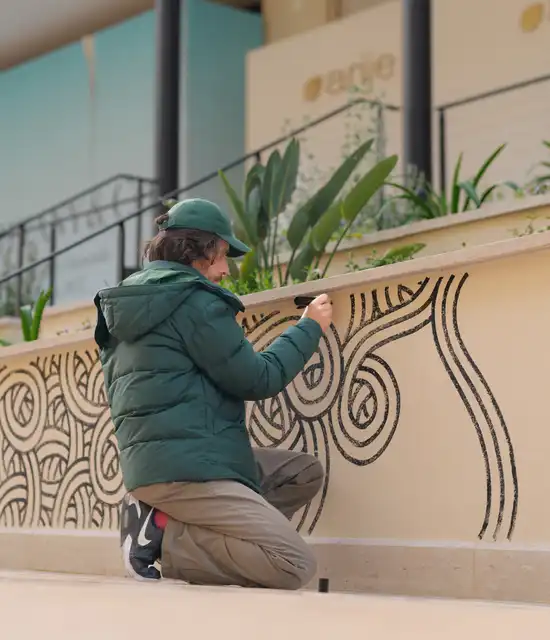
Yann-Arthus Bertrand, Agnès b., Jean-Charles de Castelbajac and now Monaco. Those are some serious collaborations!
Jordane Saget: To be honest, people come and find me. I wait for the lines to bring me my collaborations. It’s a way for me to avoid questionable collaborations and to be able to judge straight away the motivations of the person in front of me, the project into which the lines would fit, that sort of thing. Working my lines into fast fashion, for example, would be absolutely impossible. Because, when it comes down to it, I am standing for what people have put into these lines. So I can’t put them down indiscriminately without thinking. It has to mean something. By letting people come to me, it’s easier for me to steer my collaborative projects.
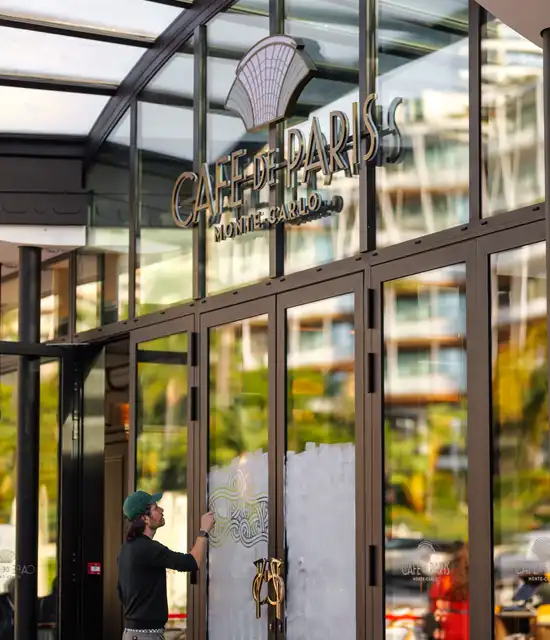
What places have particularly inspired you?
Jordane Saget: The lines will be installed along the One Monte-Carlo walkways, near the Monte-Carlo Casino and on the Monte-Carlo Beach pontoon. My lines plunging into the sea... brilliant! I’m also working on the sun terraces behind the Monte-Carlo Casino. While I was in Monaco, I took the opportunity to paint a few lines on the windows of my hotel room. With the sea as a backdrop! It’s this kind of thing that fuels my deep love for this project in Monaco. A project driven by a shared desire to do something new, something different. To move forward smoothly, to respect the serenity of places and their people. Something subtle and delicate. After that, if I could see myself taking to the legendary Formula 1 Grand Prix in Monaco, that would be so crazy! For example, in front of the Hôtel de Paris Monte-Carlo, where the cars pass, or the curves of the Loews hairpin bend... that would be incredible! Monaco is a city on a human scale that’s constantly on the move, and that’s very exciting!
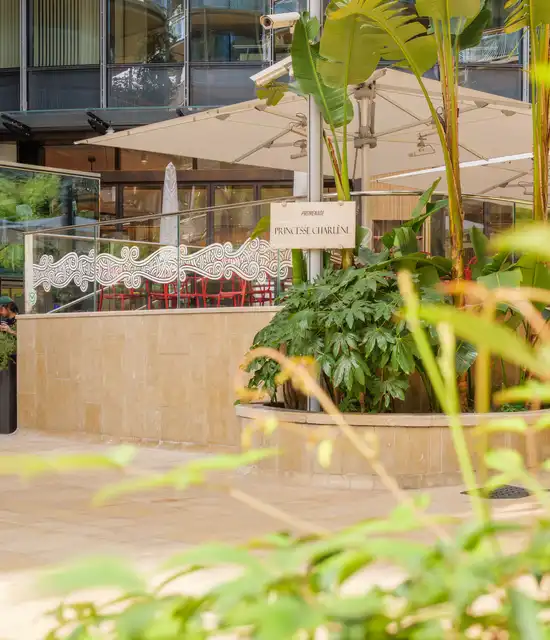
You might also like…
Pierre Boulez: Celebrating 100 years of modern music in Printemps des Arts Monte-Carlo
For this new edition ahead of the classical music festival, Bruno Mantovani explores the music of this visionary composer, conductor and teacher.

Belle Époque by Bon Entendeur curates the Maona Monte-Carlo’s playlists
Our new summer destination, Maona Monte-Carlo, prepares to reinvent the light and carefree times of the Dolce Vita of the 1960s Riviera. Bon Entendeur came to soak up its glamorous and deliciously retro atmosphere and prepare elegant and fun bespoke playlists for the summer nights.

Interview with Gérard Veyrat de Lachenal, 'Mr Wine’ at the Monte-Carlo Bay Hotel & Resort
Discover our interview with the famous head sommelier of the Blue Bay, the gastronomic restaurant of the Monte-Carlo Bay Hotel & Resort in Monaco.

